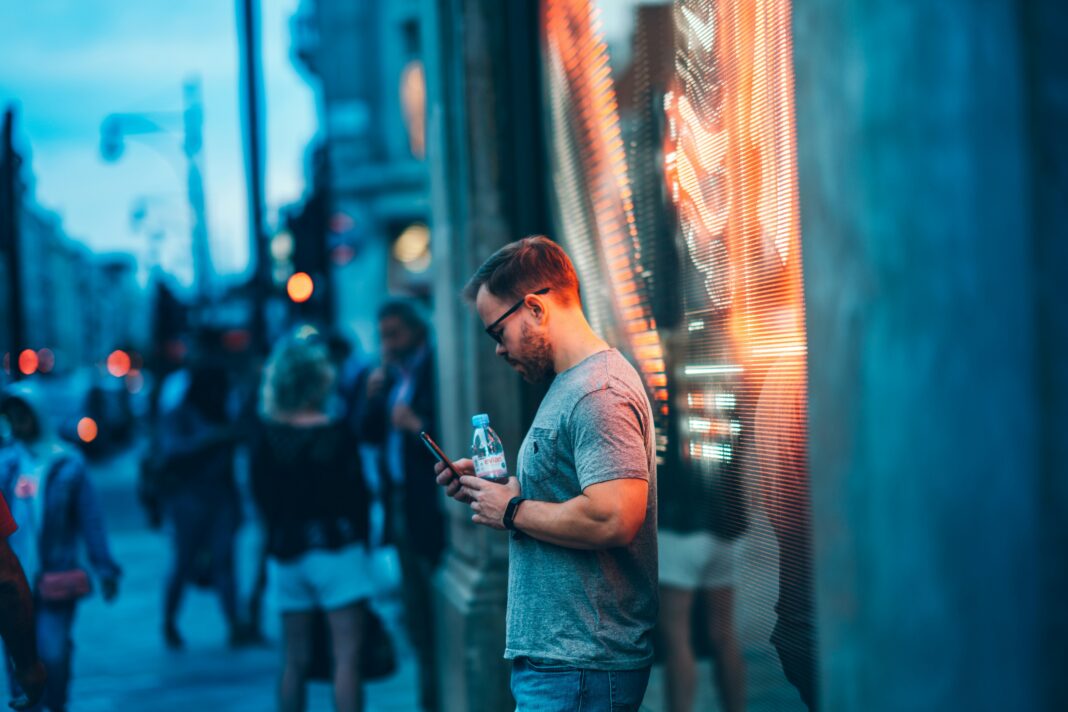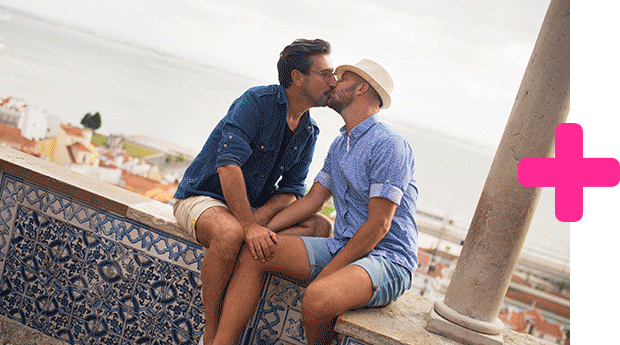We hope they’re just urban legends, but it turns out some of those stories about the dangers of dating and using hookup apps abroad can turn out to be true.
In June, for example, a British-Mexican man received a six-month suspended sentence and a hefty fine while visiting Qatar, a country where homosexually is illegal, after being found guilty of possessing an illegal substance. He is calling the whole thing a “honeytrap,” a setup by the local police conducted through a dating app, targeting him only because he is gay.
Or take the January 2023 advisory issued by the U.S. Embassy in Jamaica, which warned travellers that criminals on the island nation were using dating apps to lure LGBTQ+ tourists to meet in public spaces and then later assaulting, threatening or robbing them.
Then there are those anecdotes you hear from your friends, about the advisories that popped up when they logged onto dating apps while on vacation. Warnings of kidnappings, localized health outbreaks like Mpox and some countries using location data to crack down on LGBTQ2S+ people. Plus, let’s not forget that oft-used, post-vacation hookup story starter: “It probably wasn’t a good idea, or the safest, but….”
There are as many opinions about dating and hookup platforms as there are people using them. While they can help to connect people and organize inclusive events in places where there is no visible community, the constant notifications and screen-based quests for encounters interfere with our ability to fully experience a new destination. Since many platforms collect and share personal data, there are also safety and privacy concerns about being easily geolocated by criminals or government agents.
For those who find that apps provide a net benefit to their travel adventures, here are some tips we’ve gathered from several sources on how to stay safe on gay apps abroad.
What can I do to stay safe even before I travel?
Before landing at a destination’s airport, research the country or city you are visiting. Start with news stories about local incidents, but also use the apps themselves to do some recon with locals. Platforms with “roaming” features allow users to interact with profiles in the destination before arriving there. Ask online hotties about the local LGBTQ2S+ scene and any advice they have on meeting people and avoiding trouble.
Several websites, like the Government of Canada’s travel advisory pages, highlight crucial information LGBTQ2S+ travellers need to know about specific countries, regions and cities. For example, that warning to travellers to Jamaica from the U.S. embassy was echoed by Canada. “Avoid public displays of affection,” it stated. The Canadian travel advisory for the United Arab Emirates, home to popular layover city Dubai, warns about laws criminalizing sexual acts and relationships between persons of the same sex. Anything considered to be “cross dressing, gross indecency or an offence to public morals” could result in fines, a jail sentence or even the death penalty.
When travelling to countries where same-sex relations are illegal, organizations like Volunteer Village suggest it might be prudent to delete any LGBTQ2S+ apps before even leaving your home country. In several cases (including Indonesia, Turkey, Malaysia, Cuba and China, for example), access may be blocked or restricted anyway, unless you use a VPN for access.
How can I protect my identity on gay hookup apps?
While the profile picture you use at home might be your smiling face, it’s worth considering replacing it with a headless torso while you’re abroad, especially if staying at a hotel, resort or small town where it’s possible you could be recognized while out and about, warns the Canadian government’s travel and tourism website. Send a face pic only when you feel confident that the person you’re chatting with is trustworthy. A vacation is always a good opportunity to update your profile, evaluating it for details that might be okay to share at home but not in other places. This might include gender, sexuality, marital status, HIV status or PrEP use, age, your profession or links to your Instagram, Facebook or LinkedIn profiles; personal details might make you an easy or more appealing target to criminals. Avoid temptation to share details about exactly where you’re staying or the length of your stay.
How can I tell if someone is real on a hookup app?
Photos and personal details may expose you too much in some foreign countries. But flip the script when looking at the profiles of other guys. You’re going to want to look for those kinds of details to help determine if the hotties you’re interested in, or who are blowing up your inbox, are real. It’s easy to create a dating or hookup app account. If an account seems suspiciously blank, don’t be shy about requesting face pics, asking for non-identifying personal details (e.g., about what sexual activities they enjoy, or what they like to do on a date) or for a voice or video call. Remember that even social media accounts can be fake, so give what you’re sent and told a good hard look.
What should I do before I head out for a hookup?
As cliché as it sounds, let a trusted friend know what’s up. The Rainbow Project, a Northern Ireland-based health organization that works to improve the physical, mental and emotional health and well-being of LGBTQ2S+ people, offers great hookup advice, whether at home or abroad. Along with guidance on consent and knowing boundaries before meeting, it also recommends sending “a trusted friend a text to let them know you’re going out for a hook-up, and if they don’t hear from you in a few hours or see any online activity, they should find out what’s up or let people know.”
Shy about doing this? Schedule an email with information—including the handle of who you’re meeting, screenshots of their photos and the conversation, and where you’re meeting them—that is timed to be dispatched during or after your hookup. If it all goes well, you can cancel the message before it’s sent.
Before stepping out the door, think of a plan for what you’ll do if the date doesn’t go as expected.
Where are the safest places to meet a hookup?
The Rainbow Project advises that first meetings should be in a public place, like a café, transportation station or park where there are other people around. “This will help you figure out if they’re like they said they would be, and hopefully give you some time to gauge what kind of person they are before you take things any further.” Be cautious about going straight to a stranger’s home or immediately inviting them to where you’re staying.
If there’s one around, The Rainbow Project recommends meeting at a gay sauna. “There are security cameras, witnesses and lockers to store belongings,” it states. “Saunas will have staff on-site 24/7, there will be some CCTV…. Anyone who is under the influence of drink or drugs may be refused entry or asked to leave.”
No matter where you meet, don’t take anything of value with you, and be cautious if offered alcohol, drinks or drugs.
What technology can keep me safe during a hookup?
Many popular apps and websites have introduced safety features. This includes country-specific warnings and the ability to hide sexual orientation information by default in places where homosexuality is illegal or there are threats toward the community.
Many apps that use geopositioning have in some countries disabled the show-distance feature that allows users to see how far away fellow users are, while some will give a less-precise distance in some places.
Privacy settings like “stealth mode” can be helpful in protecting your identity and hiding your location. Android and iPhone operating systems will allow you to hide or disguise icons for apps that you don’t want officials or other prying eyes to know about. Ride share apps like Uber and Lyft allow you to share your route with others.
Remember, just because you are hitting it off with a person online doesn’t mean you need to rush into meeting them IRL. Take things slow and trust your instincts.


